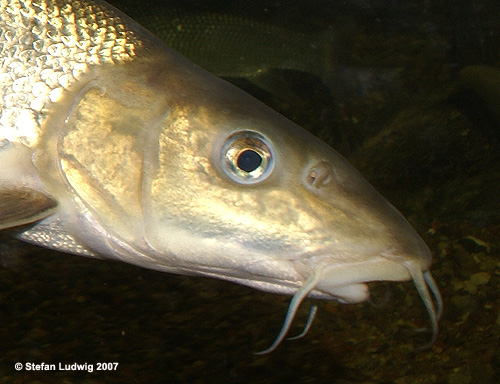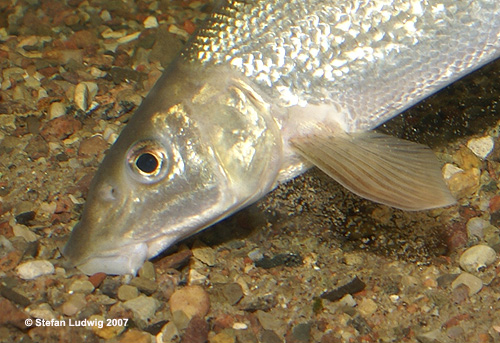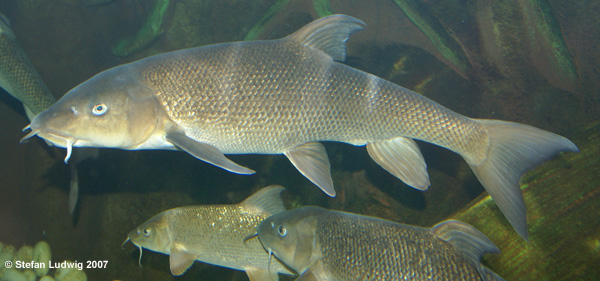Barbel
|
| (lat. Barbus barbus, Linneaus 1758) |
|
Description: The barbel has a long streched body with striking
big fin's due to its live in strong current. Its body is filled with smal
scales. The Barbel has a proboscis like epigynous mouth and four big barbels (each
two on the upper lip und the lower lip) what shows it to be a groundfish.
The back of the barbel is grey-green, the sides shimmer golden. The venter
is white and the fins are grey-green to red. The so-called gorge-teeth of
the barbel are arranged in the rows in contrary to most other cyprinids
where they are arranged in two rows. It grows up to 90cm and may weigh then
about 10 kilos. In the average it is about 30 to 50 cm long and with a
weight of 1 to 3 kilos. The barbel feeds on spawn, insect larvae, mussels,
snails and
wurms. Bigger barbels also prey on smaller fishes.
 |
|
Appearance: Entire north-atlantic area. In europe
from northernspain, france, germany, the whole baltic area,
scandinavia up to northern russia.
|
|
Lifecycle: Als potamodrous migratory fish barbels swim during
spawning migration in may to Juli river upwards. The spawning of the smoll
and adhesive eggs(2 mm diameter; 3000-9000 pieces) takes place in
narrow gritty places. The larvea hatch out after 10 to 15 days depending on
the watertemperature.
They avoid brightness and stay in the interstitial and feed on their yolksac.
With a length of 10 to 14 mm the take food as plankton and very small
ground inhabitants
|
|
Features : The barbel is a typical groundfish that feels
comfortable in strong currents. It prefers stony sandy grounds and because
of its frequent appearance gave the name to a whole river region. The
dissection of our rivers togather with the pollution collapsed the former
big stocks. In the meantime the stocks of the barbel started growing again.
In a survey in the lower rhine with the nedap trails system barbels migrate
between 50 and 100 kilometers.

It was the fish of the year 2003 in germany. |
Further informations :
Fishekology 2/89
|
